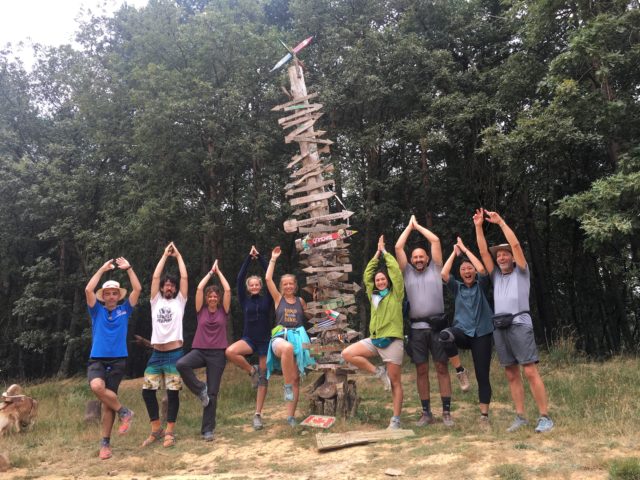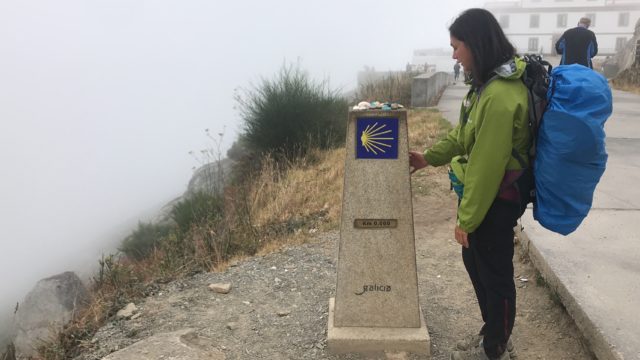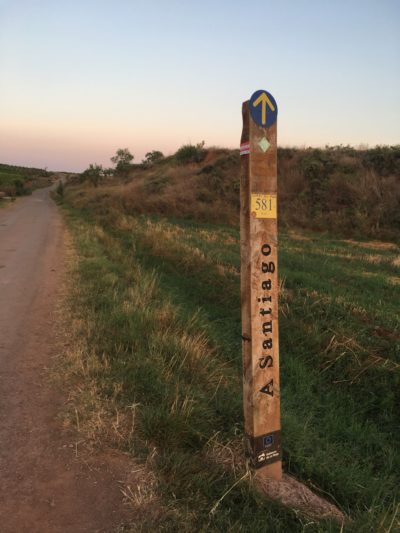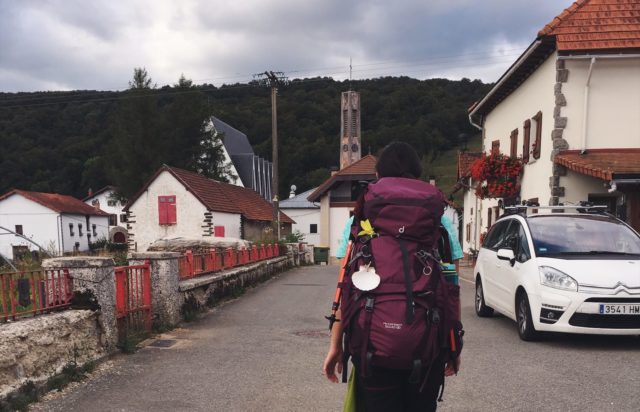Here at Preen, we’re fully aware that adult life doesn’t always go as smoothly (and look as beautiful) as curated Instagram feeds. We all face challenges amidst all the good things. Meet Mikka Wee, a former food editor-turned-working gal in Singapore, who’s about to share all the ups and downs that come with adulting and living. Welcome to Bless This Mess!
Backpacking has been a huge part of my lifestyle from my early 20s until my mid-20s. I fell in love with it because it was so freeing, and at the same time, so humbling. Most of the questions I’d get from my Grandma and Mum were, “is that all you’re bringing with you?!” And I’d say, “yes” with a smirk painted on my face. It was a season of disposable underwear and lightweight gear, as well as great lessons on independence and taking care of myself on the road. I love travelling alone so much, and now that I am married, I have embarked on solo adventures of my own in Bali and New York. However, I’d get the occasional comment from people, raising eyebrows about my travel decisions, which I am normally immune to. I enjoy the rough road every once in a while, and one of my goals in this lifetime is to walk to Camino de Santiago.
I reconnected recently with my friend Kylie Misa from my university days, who has walked the Camino twice. Her first journey took three days, and her second, 35 days. Apart from asking for tips, I wanted to know if there was a deeper reason that compelled her to leave her comfort zone and embark on what many call the “pilgrimage” to the Santiago de Compostela, the iconic church that serves as the Camino’s destination.
“Ever since walking from Sarria to Santiago de Compostela in 2014 (the one that took only three days), I’ve made completing the Camino de Santiago a part of my bucket list before I turn 30 years old. I decided that my 28th would be the year; it was the ultimate New Year’s resolution, and I moved heaven and earth in pursuit of it. But it wasn’t just because it had been a dream of mine; it was also because I wanted to make a major change in my life. After years of feeling directionless, I wanted a life-altering experience that would teach me more about myself.”
These sorts of decisions involve a lot of commitment, and for Kylie, preparing for it was no easy feat. She bought all her gear and did all her research six months before the trip—reading books and blogs, watching YouTube videos, and immersing herself in other people’s experiences. “Training got serious three months before leaving,” she tells me. I would rotate walking with my Camino backpack, strengthening in the gym, and climbing a mountain.

“It was most challenging emotionally because I don’t think you can be totally ready for something as transformative as the Camino, but I did a lot of introspection while preparing for it. I realized that the most important thing is knowing the purpose of your trip and the reason you’re doing it. Then, be decisive and go.” Having said this, I just had to know if there was a part of her that wanted to back out. “At that time, I had many questions about where my life was going, and I knew I needed to do something for myself. I really, truly believed that those questions could only have been answered by walking the Camino, so from the very beginning, I was all in. Right after my first Camino experience (which was only three days long), I knew I wanted to complete it—it was just a matter of when I would do it. I never thought of backing out, not even during the hardest points,” Kylie explains.
Reading about the Camino myself, many say that it is a journey of introspection, self-healing, and reflection. It seems like such a personal voyage, and according to Kylie, it was quite a cathartic feat. “I needed a lot of self-love at that time. I was at a point in my life where I needed to confront myself—the good and the bad parts. Some of the most important things I reflected on were about my next steps and my general life direction. I had just quit my stable job and decided to focus on the social enterprise I started with a friend. There were a lot of questions on whether I was ready for this new stage in my life, my game plan after this transition, and the like. On the Camino, I learned about letting people go their way, at their own pace, and allowing people to be themselves. Even if they go on separate ways, people who love you will always, somehow, find a way to return to your life—these are the people you have to value. Also, I wanted to focus on my faith. Before going on the Camino, I read the book The Jesuit Guide to (Almost) Everything: A Spirituality for Real Life, which starts by asking the readers what their relationship with God is. I was contemplating about this while walking and realized that God is my compass. On the Camino, the conch shell is the symbol and also the legend that points the way for pilgrims. At the end of my Camino, I got a small tattoo of a conch shell to not only as a mark of achievement, but also to remind myself of God’s presence in my life.

“Walking every day for an average of 25 km mostly by myself was a daily ritual of self-confrontation, which eventually led me to understand myself and my flow. When you quiet your mind and when you have only one focus, which is the Walk and the Road, you can hear yourself more. You can hear your body and mind talking to you. On the Camino, I was able to stop and listen to myself, compared to ‘real life’, where it is so easy to get distracted because there are so many different external voices that fill your head, it’s hard to stay quiet and focus on yourself. While there were definitely still problems and though it’s not a silver bullet, the Camino led me to peace, wisdom, and authenticity—it led me to recognize the voice within me. This helped me realize that I was not lost. I knew who I was from the very beginning, but I was afraid to face myself and know myself deeply the way the Camino made me know myself. I realized that being ‘found’ was a matter of self-acceptance. I was also reminded that happiness is easy. It felt hard to find happiness before the Camino, but I now understand that I can find happiness in the smallest things. It’s about gratitude; if I know how to be grateful and present in the NOW, then it’s easy to be happy.
“One thing I will never forget is how ‘The Camino Provides’, the Camino taught me how to ride its path; that I can let go of control and I will still end up where I should be ending up because it is meant for me. On the last part of my walk, I made the acquaintance of David, a Frenchman who lives in the mountains of the Pyrenees. His way of living revolved around the mountain range, and as we walked up to Foncebadon, he told me that we’ve been looking at mountains wrong this whole time. We are supposed to savor the climb up, instead of thinking of it as obstacles to get to the end—as if we were attacking it. In this sense, mountains are like problems, we always tend to want to get over it, but actually we need to enjoy the journey and see it as an experience for learning.”
Kylie continues to share some of her favorite moments with me, such as spotting a KFC in Léon after two weeks of walking and celebrating because they hadn’t had fast food in a long time. There were difficult moments, too, such as the hike on their first day going up the Pyrenees with a body that wasn’t used to the climbs yet, and she also talked about braving a huge lightning storm. However, one of the most emotional parts of the Camino was when she reached the Cruz de Fierro, which most people prepare for. “They bring a stone from home and they carry it with them the whole Camino, and they deposit it at the foot of the cross. It’s very symbolic that you unburden yourself of the weight you are carrying,” Kylie shares.

Upon finally reaching and seeing the Santiago de Compostela Kylie tells me it was more sentimental for her because she had already seen it on her first Camino walk, but this time around, she went further and finished her walk at Cape Finesterre. “It was an overwhelmingly emotional experience. I got so used to walking and I realized that, when I saw the sign that says 0 Km, it hit me that I was at the end of my walk. All of a sudden I was done. For one month, this was my life. I grew to fall in love with the world, the walk, the routine, the views, and myself. I still remember the exhaustion I felt, but also relief, happiness and sadness all in one go.”
I also had to ask Kylie about her relationship with technology during this highly spiritual experience. “I thought I would go on a digital detox”, she says, “but I realized that I wanted to share my experience with others. That led me to do an almost daily journal of what I was doing on the Camino. I felt that I wanted to encourage others to do it, and the way I could do it is to show my journey. Though, there were many days I didn’t use any social media because the walk was just enjoyable by itself. There were days I was in total peace and serenity and there would be no need to see what’s going on in the outside world.” Lastly, I asked what advice she could share to other female travelers wanting to embark on the Camino and how to prepare for it. Kylie shares, “There were a lot of solo female pilgrims on the Camino. Nowadays, ANYONE can do it. On the Camino, people don’t nitpick why you’re doing it alone as a woman. It is normal for anyone to walk the Camino—no matter the gender or age. I met a solo female pilgrim who was 60+ years old and she was on her 6th Camino! The Camino is for all, and it teaches us a lot about how life should be, too.”
There are many routes and timeframes on completing the Camino, and given my circumstances, I would probably embark on a one-week journey for now. However, it will still be a dream for me to complete the entire route one day, starting from the Camino Primitivo or the Original Way. “Do it when you don’t have a lot of attachments, when you have emotional space. When you’re not thinking of something back home; something that might stress you out or leave you thinking of other things other than the Walk,” says Kylie. “Go when you have so much time. I believe that the best part of the Camino is enjoying it and not stressing out to finish it at a certain time. Also, do the Camino for yourself, or for a cause that will push you to finish. If you don’t have something to do it for, it can get really hard. You need an inspiration to finish until the end.
“I would encourage other women to walk the Camino because we can. It’s okay to be a solo female pilgrim. Don’t be afraid, the Way is full of good, genuine people, many of whom are solo female travelers as well. I encourage others to walk the Camino if you think it will push you out of your comfort zone, make you a better person, or inspire you to love yourself.”
Well, count me in.
Disclaimer: The views expressed here are solely those of the author in her private capacity and do not in any way represent the views of Preen.ph, or any other entity of the Inquirer Group of Companies.
Photos courtesy of Kylie Misa
For the latest in culture, fashion, beauty, and celebrities, subscribe to our weekly newsletter here
Follow Preen on Facebook, Instagram, Twitter, YouTube, and Viber
Related stories:
One year of Bless This Mess: How writing helped me survive adulting
Tabitha Jamlang on living a semi-charmed kind of life
I gave up blogging to focus on what truly matters
I want my pregnancy to prove the world wrong


